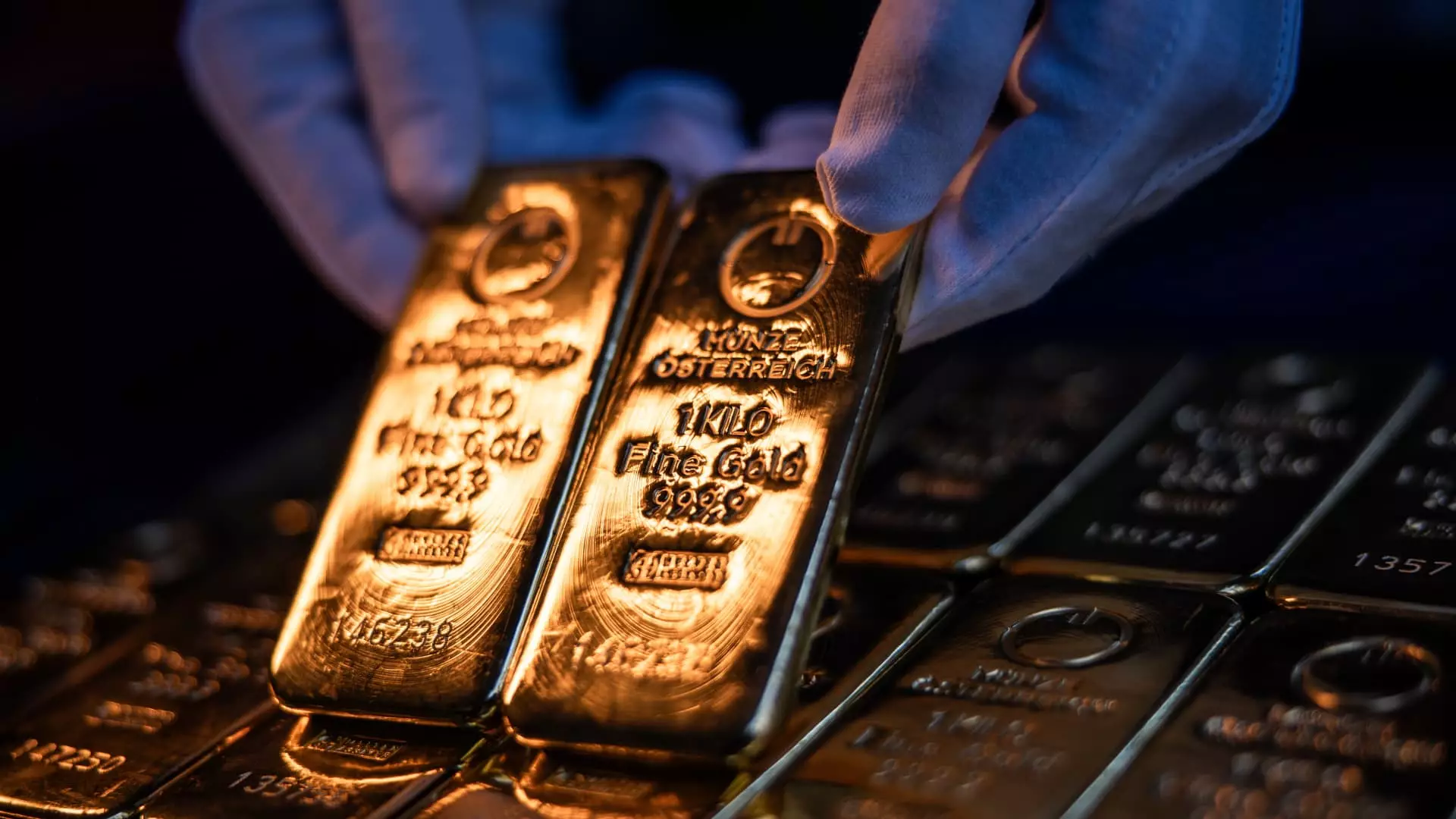The ongoing surge in gold prices has captured the attention of investors, yet financial experts urge caution. With significant gains in 2025 alone, many may be tempted to hastily invest in this precious metal. However, the allure of quick profits can lead to pitfalls that seasoned investors strive to avoid.
Gold prices are experiencing a notable uptick, as evidenced by the SPDR Gold Shares fund (GLD) reflecting approximately an 11% increase as of mid-February 2025. Over the preceding year, gold has risen about 42%, indicating a robust performance compared to other assets. In contrast, the S&P 500 index has only seen a moderate rise of 1.5% so far this year and a total increase of 17% over the past twelve months. Meanwhile, gold futures have similarly shown strength, advancing approximately 10% year to date and soaring 36% compared to last year. Despite these impressive figures, experts caution potential investors against impulsive decisions driven by the fear-of-missing-out mentality.
The Psychological Trap of Investment FOMO
As gold investment rhetoric proliferates, financial planners report a spike in inquiries about gold among their clients—a clear indicator of shifting sentiment. Investment advisors like Lee Baker emphasize the importance of adhering to sound investment principles rather than succumbing to visceral emotions. He refers to Warren Buffett’s famous adage: “Be fearful when others are greedy, and be greedy when others are fearful.” Those who invest at peak times, often driven by the frenzy of recent returns, run the risk of making ill-fated decisions.
Baker recommends that the average investor should limit their exposure to gold to no more than 3% of a diversified portfolio. By avoiding knee-jerk reactions and focusing on a long-term investment horizon, individual investors can sidestep the common mistake of buying high and selling low. “Timing the market is notoriously difficult,” Baker notes. “If you’re entering now, it raises the question—are you buying at a peak?”
Historically, gold has been perceived as a safe haven during turbulent economic times, leading investors to flock to the asset when uncertainty looms. Senior global market strategist Sameer Samana echoes this sentiment, acknowledging that current conditions, marked by geopolitical tensions and economic instability, may entice investors to consider gold. However, it’s crucial to dissect this investment narrative.
Samana points out that, in actual crises, bonds have frequently outperformed gold as a protective asset. Moreover, the expectation that gold functions effectively as an inflation hedge fails to hold up under scrutiny in all circumstances. Often driven by recent inflation concerns, this belief can lead investors into purchases based on theoretical premises rather than solid economic data.
The dynamics of the global economy further illuminate the recent shifts in gold demand. Sanctions imposed on Russia have fueled a surge in centralized purchasing of gold—especially from nations like China that seek to bolster their gold reserves instead of relying on U.S. Treasury bonds. This action has contributed to the inflated demand for gold, leading to concomitant price increases. However, experts like Samana advise caution, recommending investors refrain from chasing current gold returns, suggesting that the conditions may not sustain these price gains in the long term.
In light of the current market conditions, investment professionals suggest alternative ways to gain exposure to gold without direct purchases. Options such as exchange-traded funds (ETFs) or shares in gold mining company stocks offer potentially superior liquidity and simplicity compared to holding physical gold. With the logistics of storing and insuring physical gold involving annual costs, these alternatives can lessen the burden on investors.
Both Baker and Samana advocate for a miniature allocation of roughly 1% to 2% in gold within a well-diversified portfolio, with the latter recommending a broader commodity strategy inclusive of energies, agriculture, and base metals alongside precious metals. Wells Fargo’s allocation strategy ranges from 2% for conservative portfolios to 7% for more aggressive growth scenarios, emphasizing the importance of balance in investment decisions.
As gold prices continue to rise, the temptation to invest may be overwhelming. However, a measured approach underscored by diligent research and adherence to sound investment principles is paramount. By avoiding impulsivity and focusing on diversification, investors can navigate the volatile waters of gold investments more strategically. Investing in gold may have its merits, yet staying true to one’s investment philosophy amidst market euphoria is the key to sustained financial success.

